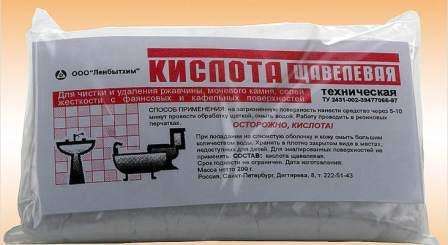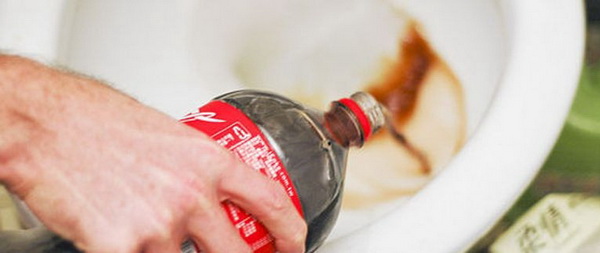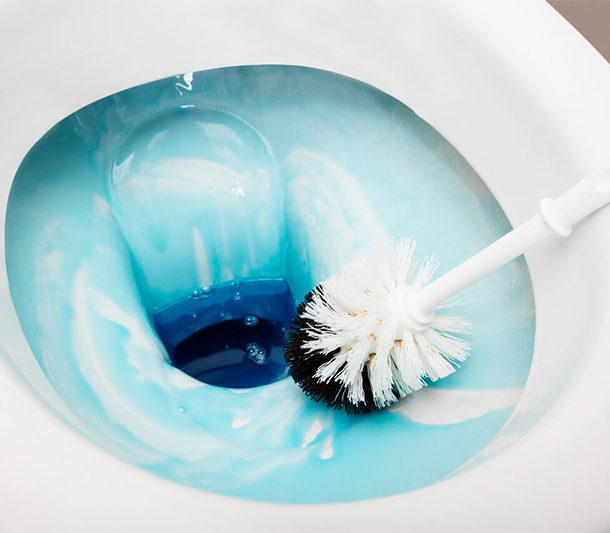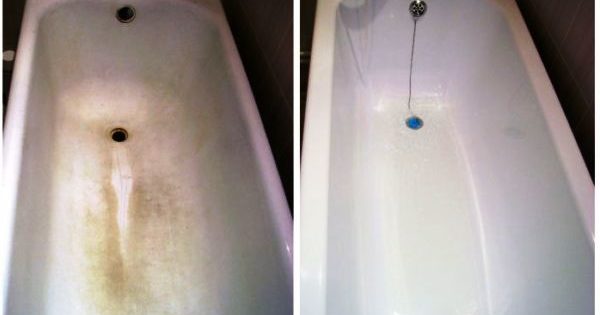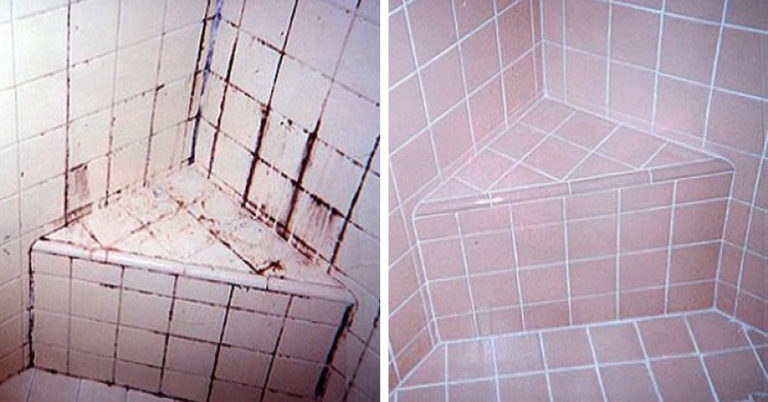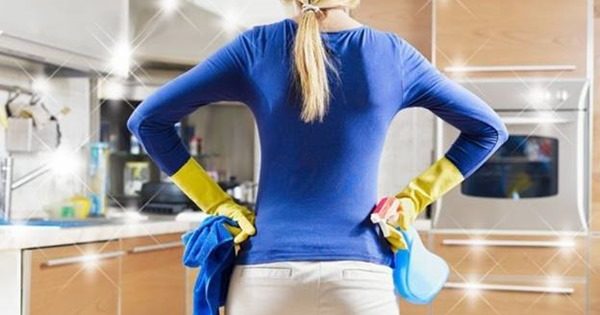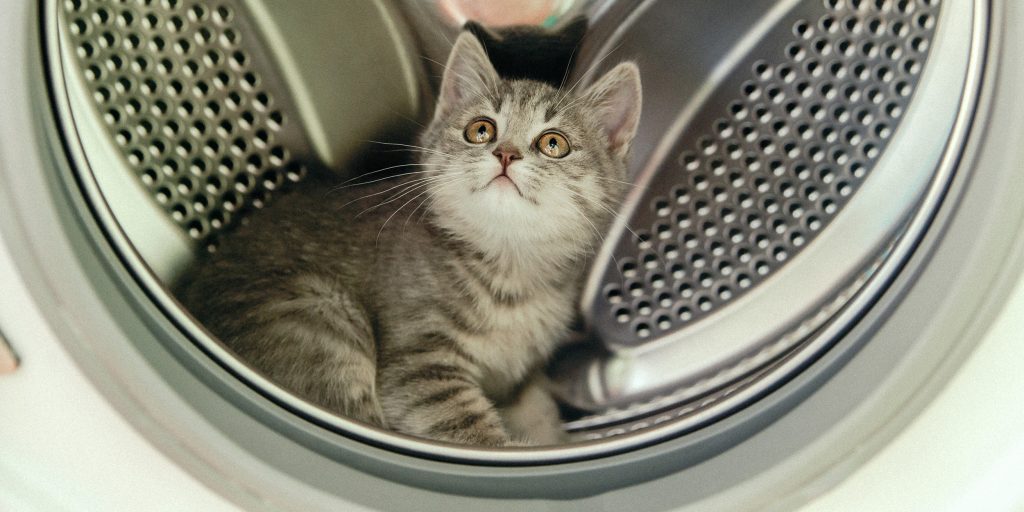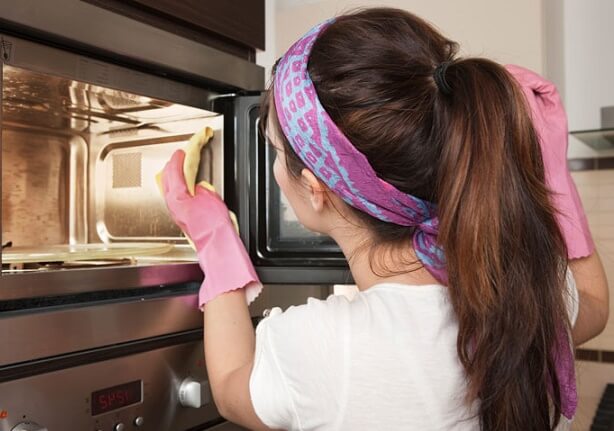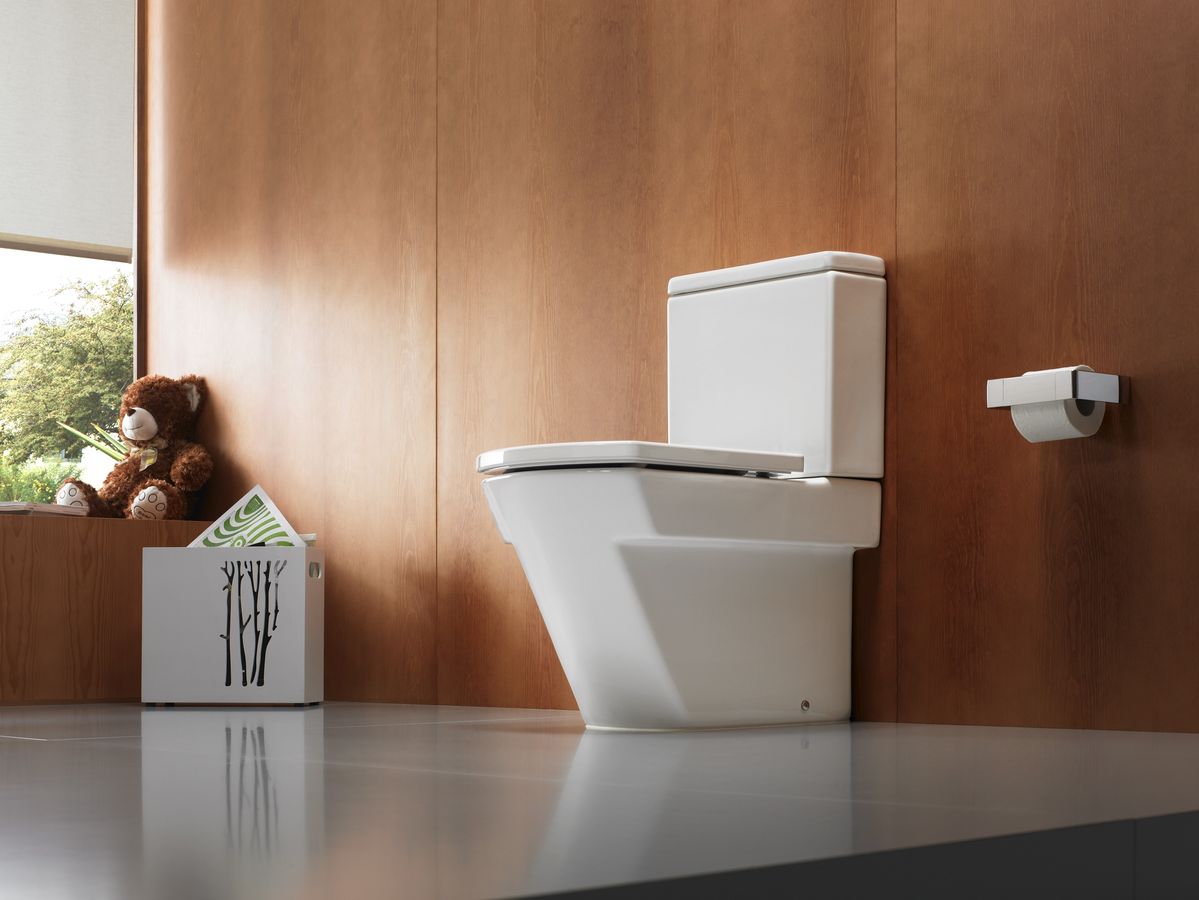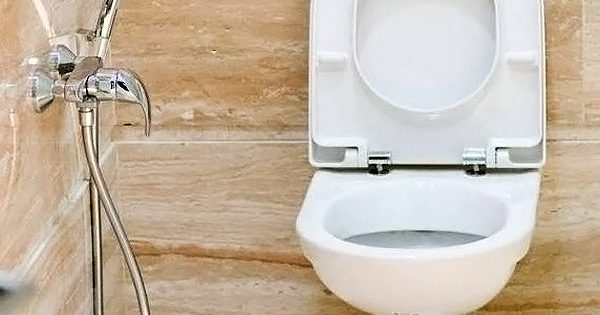17 ways to wash a toilet from a stone and yellow plaque
The perception of the interior of a room largely depends on the details. So, for example, the look of clean and snow-white plumbing can transform even the most mediocre interior and give the room a neat appearance. Conversely, yellowish marks on bath surface or toilet immediately spoil the impression of the most expensive interior. Very often, owners of new apartments have to deal with pollution that they inherited from past owners. Sometimes the cause of plaque is poor quality water. Be that as it may, but before deciding to completely replace the plumbing, it is worth trying to cope with the problem on your own. In this article we will talk about proven ways to wash the toilet from stone and yellow plaque using simple and affordable means.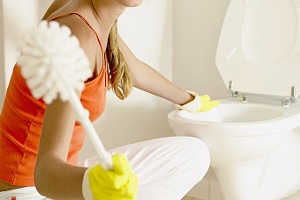
Causes of pollution
Before you start an active fight against different types of pollution, you need to determine the cause of their occurrence.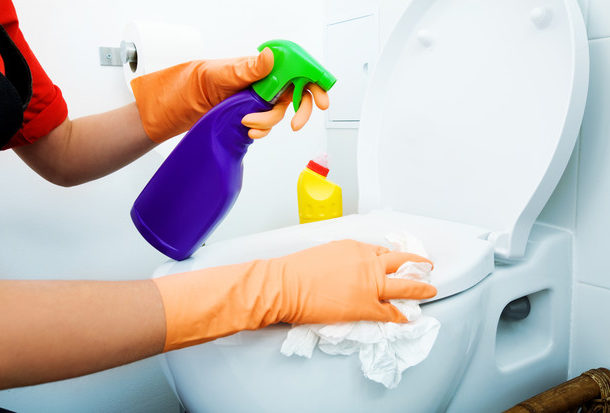 It will also help in the future to prevent re-contamination and facilitate the maintenance of plumbing. You can highlight Three main reasons:
It will also help in the future to prevent re-contamination and facilitate the maintenance of plumbing. You can highlight Three main reasons:
- Unsatisfactory condition of engineering communications. And this is not about old metal pipes inside the apartment, but about a common water main. Earlier pipes were made made of galvanized metal, which began to corrode over time. Small fragments of oxidized iron, falling into the water, stain it on the surface of plumbing are formed yellowish traces of rust. Also, the cause of rust formation may be an excess of iron in tap water and a leaking toilet bowl;
- Reason limescale is the presence in the composition of water a large number of minerals and compounds. Settling on the surface of the toilet, they form a hard and durable coating of a grayish tint;

- Urinary stone often formed due to inaccurate use of plumbing or as a result of a combination of the last two reasons. Especially often, urinary stone on the surface of the toilet appears in families where there are small children who still do not know how to flush the toilet or do not completely. The plaque has a characteristic yellow-brown color. And if limescale is simply present on the surface, then urinary stone, consisting mainly of minerals, can emit an unpleasant odor. In addition, the urinary stone contains many germs.
Before we begin to consider various methods of removing contaminants, it is worth noting that completely clean only relatively fresh traces of rust, plaque or stone. Old pollution without the use of mechanical cleaning is almost impossible to wash. In turn, mechanical cleaning will lead to a violation of the integrity of the toilet cover, the formation of characteristic marks and scratches. These places will be the most vulnerable and in the future, in the absence of regular care, it is on them that spots will re-form. Therefore, in such a neglected case, it is still worth thinking about replacing the plumbing and not wasting time and effort on restoring it.
Limescale removers
Limescale is a hard deposit that cannot be washed with gentle means. Many housewives recommend using the following methods:
Many housewives recommend using the following methods:
- №1. Cleaning with abrasive powders. Really effective, since we act on pollution, albeit with microscopic, but still solid particles of abrasive. At the same time, not only plaque, but also scratches are erased from the surface. As a result, on the surface of the once smooth and shiny toilet bowl, areas devoid of a characteristic shine may form. This is the negative side of mechanical cleaning, which we have already mentioned, so its use is quite controversial;
- №2. No harm to the surface to cope with plaque alkali-based formulations. Great cleaners clogged sewer pipes. But there are some precautions. If your the toilet is made of plastic, then it is better to refrain from this method, as well as from the use of compositions based on various acids. All alkaline products contain caustic soda. It is he who splits the plaque. Just pour the product into the toilet, close the lid and leave for several hours. After that, carefully walk along the walls and problem areas with a brush. You can do otherwise - scoop out water from the drain hole, after having previously blocked the water supply to the drain tank, apply the product on a piece of cloth and cover the place of contamination. Doing this is necessary with protective gloves and do not forget to ventilate the room. After a couple of hours, the place needs to be rubbed, and then fill the tank and rinse with water;
- №3. A more aggressive means is acid. Acetic acid may be used. Just pour the product into the toilet, close the lid and leave it to work all night. The next day, thoroughly rub the dirt with a brush and several times flush water for washing. If it was not possible to achieve the desired result the first time, you can try again;
- №4. Sometimes acetic acid remains powerless before persistent and chronic plaque. Then you can use a more aggressive acid – salt However, this method is strictly contraindicated if your pipes are plastic. If they are made of metal or cast iron, you can affect the plaque but not more than 1 time. Pour 200 ml of a 33% hydrochloric acid solution into a container with a convenient dispenser or spout. Very carefully, with a thin stream, distribute the acid over the entire surface of the toilet. Close the lid immediately and detect for 20 minutes. After that, just drain the water a few times. When working with this substance, you need to be extremely careful, protect your hands and preferably the respiratory and vision organs;

- №5 You can also handle plaque oxal or citric acid if it just started to form on the surface. The acid is diluted in warm clean water in such a proportion that as a result a solution of 5% concentration is obtained. The liquid is applied to the stains for several hours, and then rubbed with a brush and washed off;
- No. 6. Chlorine-based products may have the desired effect. They are simply applied to the surface, left to act for several hours, and then cleaned with a brush or ruff;
- №7. Unusual methods of controlling limescale include exposure to carbonated drinks. Or rather Coca-Cola or sprite. The fact is that these drinks contain a large amount of citric acid. Just pour the cola into the toilet and leave it overnight. It will take 2-3 bottles. If a miracle did not occur, then the pollution is too persistent;
- №8. In this case, you can try to process the surface. electrolyte. Surely there is a motorist in the family who has this solution. Pour 1 cup of liquid into the toilet, distributing it over the walls. Leave on for 15 minutes and then rinse with water. This method is also not recommended for use with plastic pipes;

- №9. Veterinary pharmacies sell a product called "Monochloride iodine" which perfectly copes with the splitting of the stone. Apply the solution to the desired area and after no more than a couple of minutes, rinse with water.This tool is contraindicated to use if the pipes are made of cast iron, or there are aluminum elements with which direct contact can occur.
Rust remover
There are many ready-made household cleaning products designed to remove traces of rust.  You are already aware of them from advertising. Let's talk about folk remedies:
You are already aware of them from advertising. Let's talk about folk remedies:
- №10. Great fight with yellow traces solutions of various acids for example, phosphoric. It is necessary to take 100 g of the solution with a concentration of no more than 5-7% and distribute it evenly over the surface of the toilet bowl and leave half for pouring into the drain tank itself. After 10-15 minutes, no more, you need to rinse and go through the bowl with a ruff or a brush with a stiff bristle;
- № 11. Another effective remedy is sodium dioxide. You will need 1 tbsp. baking soda and 200 ml of vinegar. Vinegar must be slightly warmed up, in no case bring the liquid to a boil. Dissolve the baking soda in vinegar and wipe off any traces of rust with the resulting solution. Do not rinse off immediately. Leave the product on the surface for several hours. Then re-moisten the sponge in the solution, wipe the dirt and rinse with water;

- No. 12. Oxalic acid. It is usually sold in dry form and is a transparent crystal. Pour some acid onto a cloth or sponge, lightly moisten it with water or alcohol and wipe the surface thoroughly. After that, wait 10-15 minutes, once again go to the problem areas with a sponge and thoroughly rinse the toilet with clean water;
- №13. If traces of rust have just begun to appear, you can try to eliminate them with the usual washing powder. The surface of the toilet should be evenly sprinkled with any powder and left to act for 30 min-1 hour. After that, rub the surface thoroughly with a brush and rinse with water. For an additional effect, you can flush the toilet with Domestos or any other similar means. If the yellowish streaks are still visible, pour them with the usual Whiteness and leave to acidify for 30 minutes. Wipe thoroughly with a brush again and rinse with water. Traces should disappear.
To combat rust, methods using Coca-Cola, hydrochloric acid or electrolyte are also suitable.
Urinary stone remover
Urinary stone looks like pollution of an unpleasant brown-yellow color. Typically, such spots can be observed under the rim or toilet seat.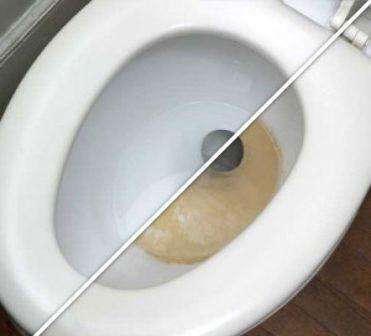 If you see that the spots are still not very saturated in color, then they are relatively new. Start cleaning with the most gentle product:
If you see that the spots are still not very saturated in color, then they are relatively new. Start cleaning with the most gentle product:
- №14. First, treat the contaminated surface with a normal table vinegar. Carefully pour the surface with vinegar and leave the watch at 8. It is better to carry out the procedure before bedtime. In the morning you need to carefully rub the surface with a brush or brush. Often, such exposure is enough to completely remove the stone;
- Number 15. Vinegar can be used in another recipe. Preheat to a temperature of 40 ° C 1 cup of vinegar, add 1 tablespoon of baking soda with mountain and a couple of drops of iodine. Carefully move the components until the soda is completely dissolved. Be careful not to inhale vinegar vapors. Pour warm liquid into the toilet and leave it overnight. In the morning, just rinse with water. If traces are still visible, you can repeat the procedure. Any vinegar, both apple and grape, but only 9% concentration, is suitable for this method;
- №16. Instead of vinegar, you can use citric acid. Take a package of lemons, mix the powder with water. Add water a little to get a paste. The resulting slurry should be applied to the dirt and left to act for a couple of hours. Then wipe with a ruff and rinse thoroughly with water;

- №17. The following method is based on the use of conventional Whiteness. Remove all water from the drain hole, fill it with a bottle of the product and leave it overnight. In the morning you need to rinse the surface well with clean, and preferably warm water.
If the first time you remove the plaque without a trace, try to combine several methods using various active ingredients. Immediately start the treatment with the most gentle means and gradually switch to more aggressive methods.
Pollution Prevention
Once you try to remove traces of old plaque or rust in one of the above ways, you will come to the conclusion that it is better to prevent than to make such efforts. 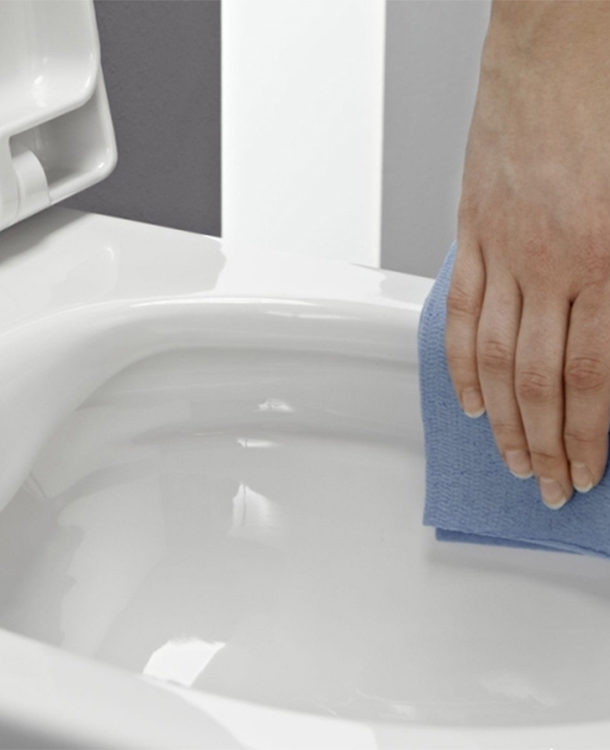 Especially when you consider that preventive measures are quite simple and require much less time and effort.
Especially when you consider that preventive measures are quite simple and require much less time and effort.
- As a prevention of the formation of limescale, use special tablets for the tank. Their main action is primarily aimed at softening water and neutralizing alkalis. They also tint water in various shades and give it a pleasant aroma;
- Gel-like products that are attached to the rim of the toilet bowl disinfect the surface with every flush and prevent the formation of urinary stone;
- Make sure that the toilet bowl does not leak, otherwise rust formation is inevitable;

- If the tank is functioning normally, but rust still forms, it is necessary to replace the old water pipes, otherwise the problem will not go away. If the pipes in the apartment are plastic, then corrosion has struck the iron pipes of the central water supply. In this case, only help filter installation;
- Once a week, clean the surface of the toilet with chlorine-based products or normal whiteness. This is a method of disinfecting and eliminating unpleasant odors, and a way to combat the appearance of limescale;
- If the design allows, once a week remove the lid and toilet seat and rinse them well with any detergent, and then under hot water;
- Make sure that all family members regularly use the drain, otherwise your efforts will be in vain.


